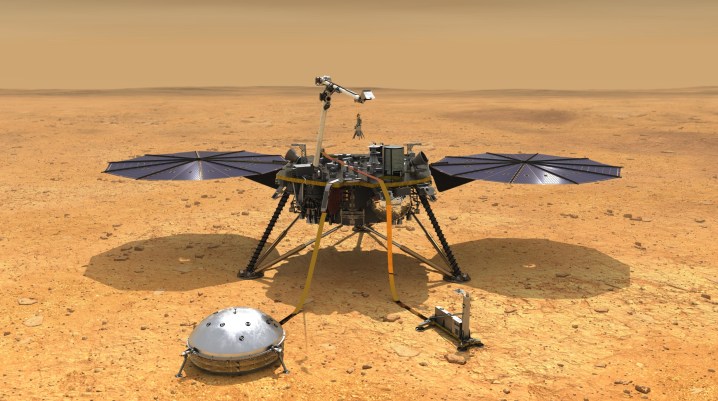
If you’re feeling an urge to curl up in bed and sleep until the cold months have passed and spring arrives, then you’re not the only one. NASA’s InSight lander on Mars will soon be powering down some of its instruments to slumber through the Martian winter before reawakening to continue its scientific investigations once the sun returns this summer.
Unlike NASA’s rovers, Curiosity and Perseverance, the batteries of which are recharged using nuclear power, InSight relies on solar power. It has two 7-foot-long solar panels that soak up the sun’s rays and generate its power. But the area where InSight is located, Elysium Planitia, is currently in its winter season. In addition, Mars will soon reach the point in its orbit when it is furthest away from the sun, called its aphelion. These two factors in combination mean that limited sunlight is reaching InSight right now.
Although engineers think that InSight would have enough power to last the winter, they want to be cautious. Mars can have sudden and dramatic dust storms that can block out sunlight, like the one which ended the Opportunity rover mission in 2019. So they’re playing it safe with InSight.
“The amount of power available over the next few months will really be driven by the weather,” InSight’s project manager, Chuck Scott of NASA’s Jet Propulsion Laboratory in Southern California, explained in a statement. “As part of our extended-mission planning, we developed an operations strategy to keep InSight safe through the winter so that we can resume science operations as solar intensity increases.”
The InSight mission was originally slated to last until 2020 but was recently extended to 2022. The team thinks that will careful planning, they’ll be able to get more data from the mission in the long run by shutting off some of its instruments now, and leaving only the essential heaters and radio communications running. So InSight won’t be collecting weather data for a while, and we’ll have to do without daily updates on the Mars weather until the instruments can be brought back online. The engineers hope to have everything back to full power after July this year, once Mars begins coming closer to the sun.
Sleep well, little InSight, and see you when the sun returns.
Editors' Recommendations
- NASA’s Orion spacecraft has ‘critical issues’ with its heat shield, report finds
- NASA gives Starliner’s first crewed launch the go-ahead
- NASA needs a new approach for its challenging Mars Sample Return mission
- These 3 companies are developing NASA’s new moon vehicle
- NASA astronauts will try to grow plants on the moon



